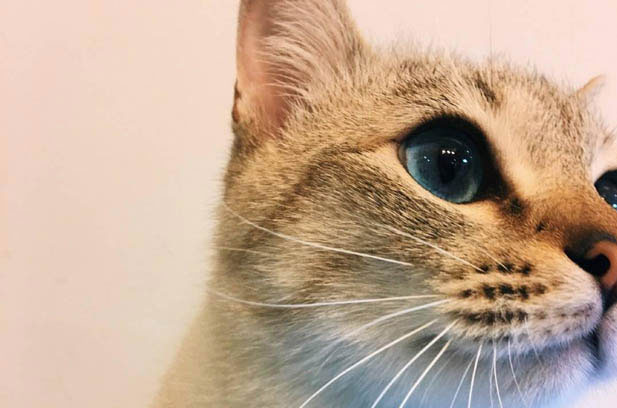There was a time when I, too, wondered: “Why do people adore these ‘ugly’ cats?” Siamese cats, with their angular faces and striking color points, seemed like an oddity in the feline world. But beauty, as I’ve learned, is a journey—not a destination. What began as confusion evolved into fascination, then into full-hearted adoration. Now, I see their “uniqueness” as a badge of honor, a reminder that true charm lies in the eye of the beholder—and that loving something unconventional can feel like discovering a hidden gem.
The Initial Misunderstanding: Why Siamese Confused Me
My first encounter with a Siamese cat left me perplexed. Unlike the round-faced, fluffy cats I’d grown up with, this one had a narrow muzzle, ears like airplane wings, and a coat that was almost two-toned—pale cream with dark “points” on its face and paws. “It looks like it’s been dipped in ink,” I quipped, not realizing how deeply my words betrayed my own narrow definition of “cute.”

I wasn’t alone in my skepticism. Friends dismissed them as “rat-like” or “too alien,” while social media feeds flooded with photos of chubby British Shorthairs or doll-like Ragdolls reinforced the idea that “conventional = beautiful.” For years, Siamese cats existed in my mind as a curiosity—a breed the internet loved to meme for their “drama” and “ugliness,” not for their grace.
The Turning Point: When “Weird” Became Wonderful
The shift began with a rescue cat named Loki. A friend fostered him—a scrawny, six-month-old Siamese mix with a perpetually startled expression and a coat that looked like it had been painted by a toddler with a shaky hand. At first, I pitied him more than anything. But as I spent time with him, something unexpected happened: his “flaws” became his finest features.
His “too big” ears: They twitched like radar dishes, always alert to my mood. When I cried, they flattened sympathetically; when I laughed, they swiveled toward the sound, as if trying to join in.
His “odd” color points: The dark fur around his mouth made it look like he was perpetually grinning, a silent joke only he understood.
His “nervous” energy: He turned mundane moments into adventures, chasing shadows like they were prey and leaping onto shelves with the precision of a tiny acrobat.
One evening, as he curled into my lap—a rare moment of stillness—I realized I’d stopped seeing his appearance and started seeing him. His beauty wasn’t in his symmetry or breed standards; it was in his vitality, his quirks, and the way he made even the quietest nights feel alive.
The Joy of Unique Affection: Why “Obscure Taste” Feels Like a Superpower
Now, I adore Siamese cats not despite their “unconventional” looks, but because of them. There’s a thrill in loving something most people overlook—a secret shared between me and my feline companion. When friends wrinkle their noses at Loki’s “strange face,” I smile, knowing they’re missing out on a depth of personality that fluffy coats and round faces can’t always reveal.
This preference for the “unpopular” isn’t about being contrary; it’s about celebrating individuality. Siamese cats are the anti-heroes of the feline world—unapologetic, misunderstood, and fiercely loyal to those who take the time to understand them. Loki, for instance, greets me each morning by placing a small “gift” (usually a leaf or a twist-tie) at my feet, a ritual as odd and endearing as he is. In a world of generic “cuteness,” he’s a reminder that uniqueness is worth cherishing.
Practical Perks: Beauty with Brains (and Robust Health)
Beyond aesthetics, Siamese cats surprise with their practical virtues. Compared to some purebreds, they’re often hardier, with fewer genetic health issues (though regular vet checkups are still a must). Loki, a mix of Siamese and who-knows-what, has never had a serious illness, thriving on play and a balanced diet. His energy is boundless, his curiosity endless—a testament to the resilience of “non-conforming” cats.
Their intelligence is another unsung trait. Siamese are famously trainable, quick to learn tricks (Loki knows “fetch” and “high five”) and adept at communicating their needs. When he wants attention, he doesn’t just meow—he sings, a melodic trill that’s impossible to ignore. This “talkativeness” once annoyed me; now, it’s our own little language, a bond forged through patience and mutual adaptation.
The Liberation of Loving Unapologetically
Perhaps the greatest lesson Loki has taught me is this: Beauty is not a standard to be met—it’s a feeling to be embraced. Society’s obsession with “perfection” often overshadows the magic of the imperfect. Whether it’s a cat with a mismatched coat, a friend with an unusual hobby, or a passion that defies trends, the courage to love what makes us different is where true freedom lies.
So let others fawn over mainstream cuteness. I’ll be here, marveling at Loki’s ink-stained grin, his acrobatic leaps, and the way he makes every ordinary day feel like an adventure. In a world that often demands conformity, our little “ugly” cat is a rebellion—a reminder that the best things in life are the ones that make us feel seen, celebrated, and unafraid to be exactly who we are.
Leave a Reply